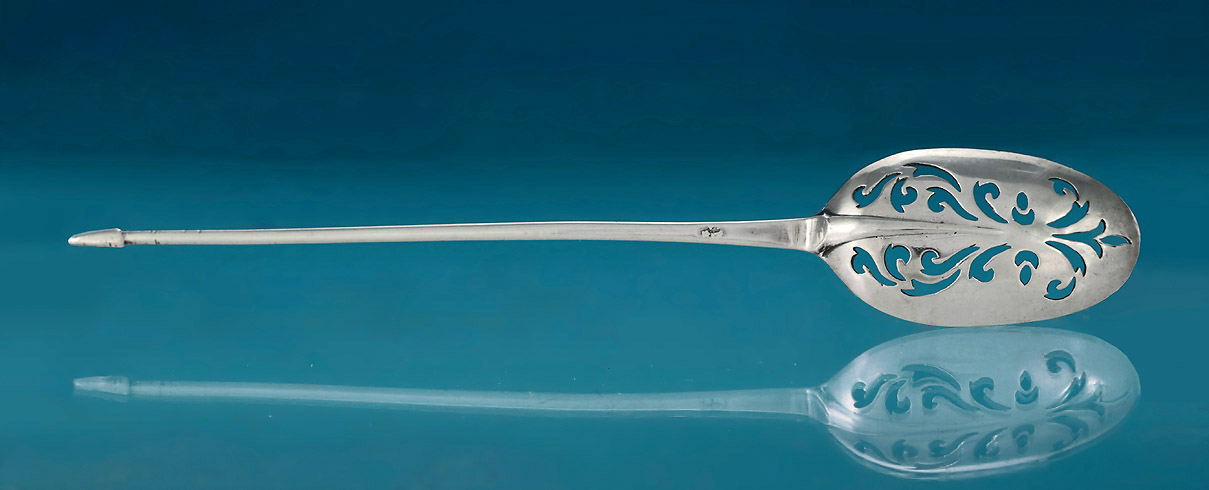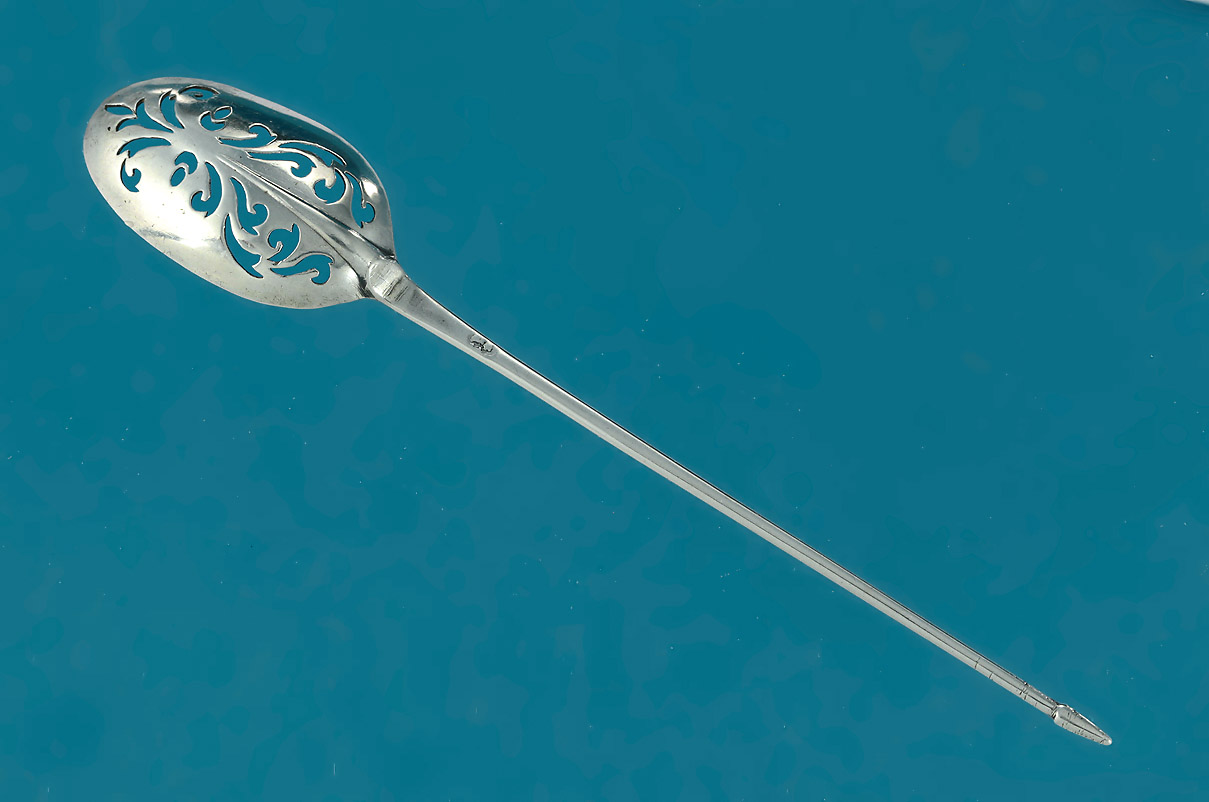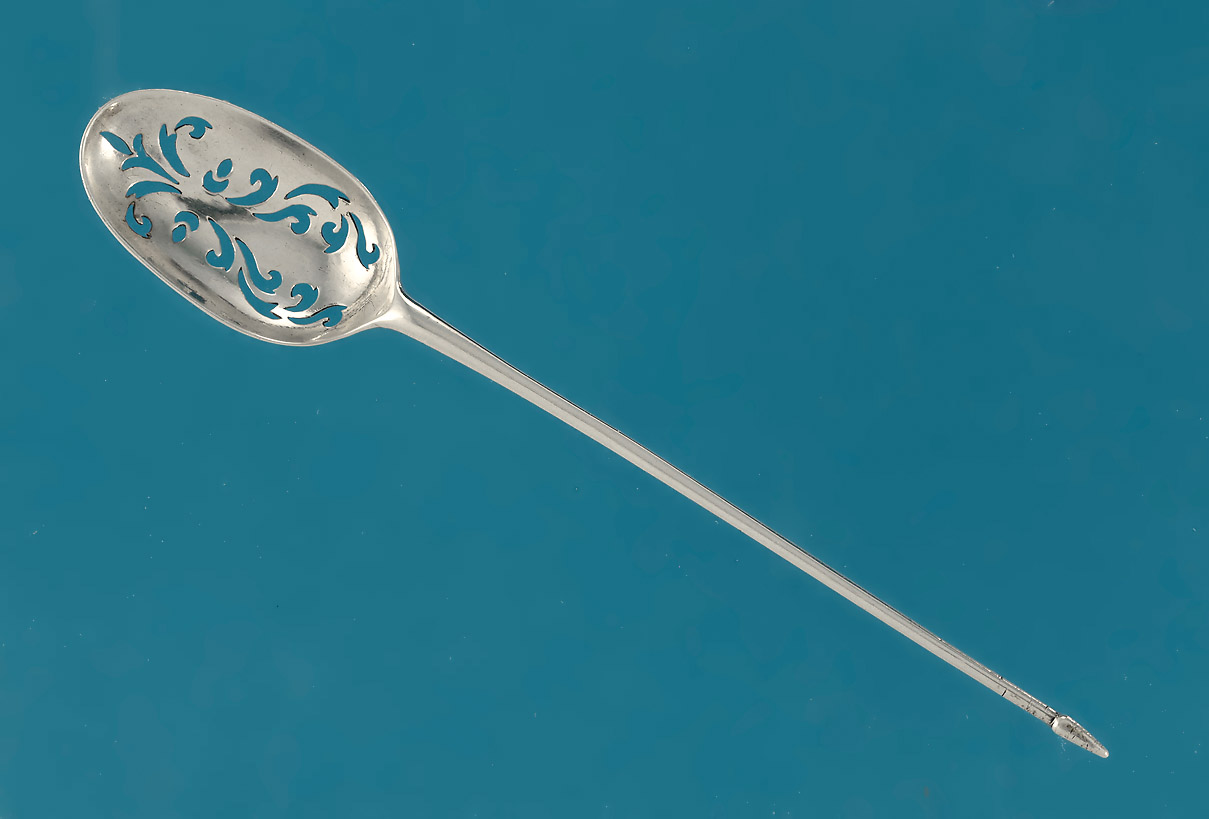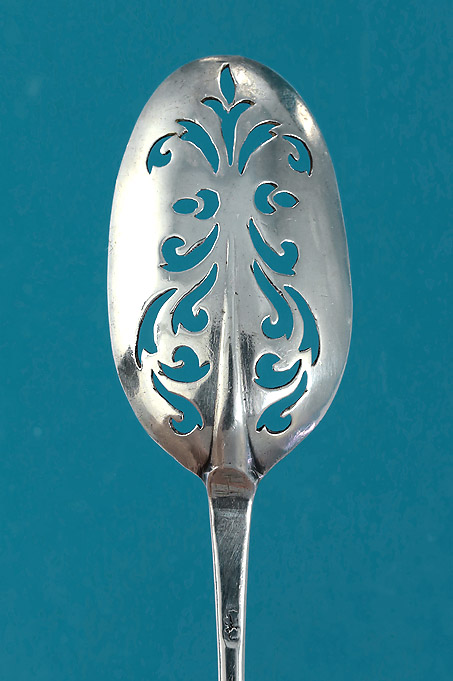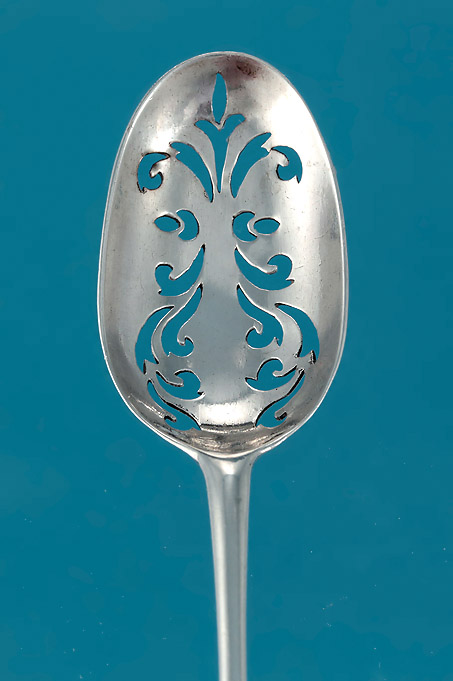|
The one-piece spoon with elongated bowl and rattail attachment,
the bowl symmetrically pierced with stylized scrolling foliage below a fleur de lis,
the slender tapering shaft ending in an early small spearhead
Maker's mark paratially struck, appears TM over a mullet
(no corresponding mark over a mullet could be found for TA, TK or TR over a mullet)
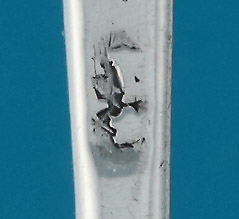
There remains debate to this day on the early use of "mote spoons".
It is assumed that a mote spoon served to remove the loose leaves,
as well as clear any residue from the small holes at the inside base of the spout.
However, their exact intent is still uncertain - as to pot - or with cup.
The earliest mote spoons date to the late 1600s, then referred to as "long tea strainer spoons".
The holes were round and simple.
By c1700, mote spoon piercing became more decorative - as the above.
But oddly, there is evidence that the piercing - often identical on differently marked spoons -
was done not by the spoon maker at all, but by a hired skilled specialist.
This particular spoon does fall into that category.
Identically pierced examples are depicted online to depict just this point.
About 1725-30, mote spoons piercings apparently began to vary in design, as well as quality of execution.
These piercings might include satires (crosses), circlets, and foliage,
as well as shell, and infrequently, "picture backs".
As well, about 1725, the use of the spearhead tip began to appear,
(The earliest examples had been made with straight pointed terminals).
And a 1738 document referred to these spoons simply as "tea strainers" -
a name they carried throughout the 18th century.
It was not until the 19th century that these spoons were renamed as we know them today :
"mote spoons", and "mote skimmers".
Yet...the early uses remain yet a mystery.
A very interesting article entitled "The Significance of Mote Spoon Piercing", by David McKinley,
appears at ascasonline.org
Condition : Excellent, slight bend to stem; the maker's mark partially rubbed; good weight;
image is oversize for inspection
6" Long / .2 oz.
SOLD
#7690
Please Inquire
|
